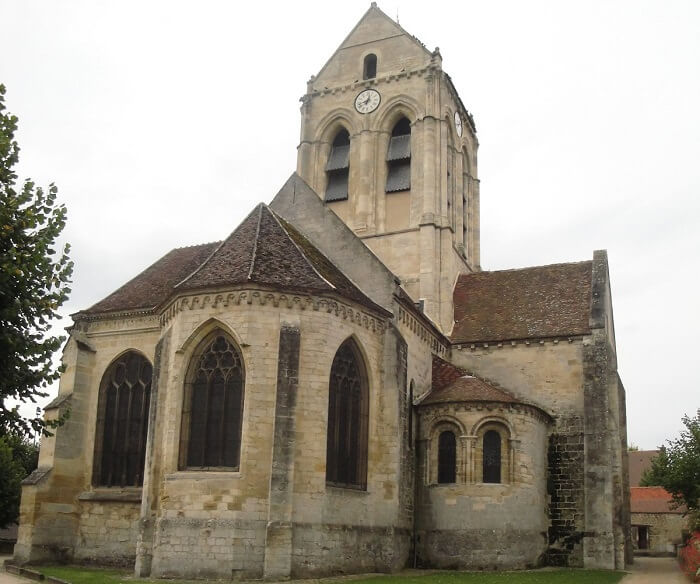The Church at Auvers, 1890 by Vincent Van Gogh

The Church at Auvers is an oil painting created by Vincent van Gogh in June 1890, which now hangs in the Musée d'Orsay in Paris, France.
The Church at Auvers - along with other canvases such as The Town Hall at Auvers and several paintings of small houses with thatched roofs - is reminiscent of scenes from the northern landscapes of his childhood and youth. A certain nostalgia for the north had already been apparent in his last weeks at Saint-Rémy-de-Provence: in a letter written a couple of weeks before his departure, he wrote "While I was ill I nevertheless did some little canvases from memory which you will see later, memories of the North"
He specifically refers to similar work done back at Nuenen when he describes this painting in a letter to his sister Wilhelmina on 5 June 1890:
I have a larger picture of the village church - an effect in which the building appears to be violet-hued against a sky of simple deep blue colour, pure cobalt; the stained-glass windows appear as ultramarine blotches, the roof is violet and partly orange. In the foreground some green plants in bloom, and sand with the pink flow of sunshine in it. And once again it is nearly the same thing as the studies I did in Nuenen of the old tower and the cemetery, only it is probably that now the colour is more expressive, more sumptuous. ”

The foreground of The Church at Auvers is brightly lit by the sun, but the church itself sits in its own shadow, and "neither reflects nor emanates any light of its own." After Van Gogh had been dismissed from the evangelical career he had hoped to continue in the Borinage, Belgium, he wrote to his brother Theo from Cuesmes in July 1880, and quoted image from Henry V by Shakespeare, Part 1 of the dark emptiness inside a church to symbolize "empty and unenlightened preaching": "Their God is like the God of Shakespeare's drunken Falstaff, 'the inside of a church'".
The motif of diverging paths also appears in his painting Wheatfield with Crows.
The Church at Auvers has special meaning to Vincent van Gogh. On 27 July 1890, aged 37, Van Gogh shot himself in the chest with a revolver. Theo Van Gogh, Vincent's brother, wanted to organize the funeral in the church at Auvers, However, the priest refused categorically: Van Gogh was protestant, plus he committed suicide! In the end, Theo had to modify the funeral invitations manually and the ceremony took place in the inn's room.
Vincent Van Gogh rests forever, together with his brother, in the town cemetery not far from the church.




















